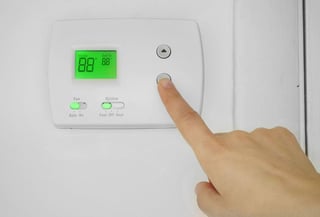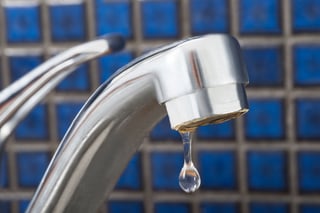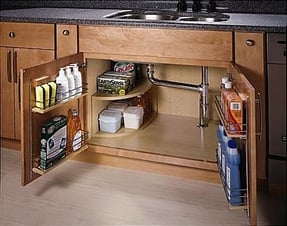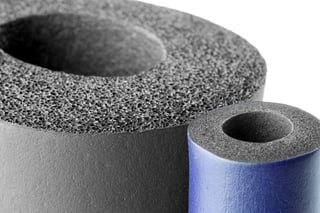Frozen pipes are one of the biggest cold weather frustrations. When you go to turn on the water and you get silence instead of the familiar sound of flowing water, your pipes are frozen and you have a major problem on your hands.
Here are six ways you can keep your pipes from freezing before the next cold snap hits. down the heat in the winter, especially if they are leaving for a few days. Who wants to pay to heat an empty house? You do, if you don't want to come back to frozen pipes.
down the heat in the winter, especially if they are leaving for a few days. Who wants to pay to heat an empty house? You do, if you don't want to come back to frozen pipes. Let the faucet drip - Pipes burst because of the water pressure and the ice forming and expanding inside the pipe as it is freezing. Letting the faucet drip keeps the water moving in the pipe, making it less likely to freeze. It also reduces the pressure in the system, which might help prevent a frozen pipe from bursting. Yes, you will spend a little money on water that is literally going down the drain, but it's a very small cost compared to your pipes freezing.
Let the faucet drip - Pipes burst because of the water pressure and the ice forming and expanding inside the pipe as it is freezing. Letting the faucet drip keeps the water moving in the pipe, making it less likely to freeze. It also reduces the pressure in the system, which might help prevent a frozen pipe from bursting. Yes, you will spend a little money on water that is literally going down the drain, but it's a very small cost compared to your pipes freezing.Open interior doors- Don't shut off the heat to individual rooms in your house, because plumbing goes  everywhere. You never know when you are opening up a section of pipes to freezing by shutting interior doors. Also, open cabinet doors in bathrooms, kitchens and anywhere else you have plumbing. A little bit of heat in the right place could make a big difference.
everywhere. You never know when you are opening up a section of pipes to freezing by shutting interior doors. Also, open cabinet doors in bathrooms, kitchens and anywhere else you have plumbing. A little bit of heat in the right place could make a big difference.
 everywhere. You never know when you are opening up a section of pipes to freezing by shutting interior doors. Also, open cabinet doors in bathrooms, kitchens and anywhere else you have plumbing. A little bit of heat in the right place could make a big difference.
everywhere. You never know when you are opening up a section of pipes to freezing by shutting interior doors. Also, open cabinet doors in bathrooms, kitchens and anywhere else you have plumbing. A little bit of heat in the right place could make a big difference.There are also some longer term solutions that you can put into place to keep your pipes from freezing.
Apply heating tape- Heating tape can be wrapped around exposed pipes to bring warmth directly to the source. You can buy it with an internal thermostat that will sense when heat is needed so it goes on and off automatically. If you prefer a cheaper option, you can simply plug it in and it will stay on all the time. Using tape with constant current requires you to unplug it during warmer months. Either option requires you to check on the heat tape periodically to make sure that there are no electrical issues that could cause a fire.

Add extra insulation- Pipes located in basements, attics or other areas with lighter insulation are more vulnerable to freezing. You can insulate the pipes themselves with foam rubber or fiberglass sleeves, or insulate the entire space.
Some of these solutions will cost a little money. But the cost to repair a frozen pipe, especially if it has burst, will be much higher. That, plus avoiding the inconvenience and frustration, makes it a good idea to make sure you keep your pipes from freezing.
You may want to visit our Plumbing Page for more tips and tricks.


